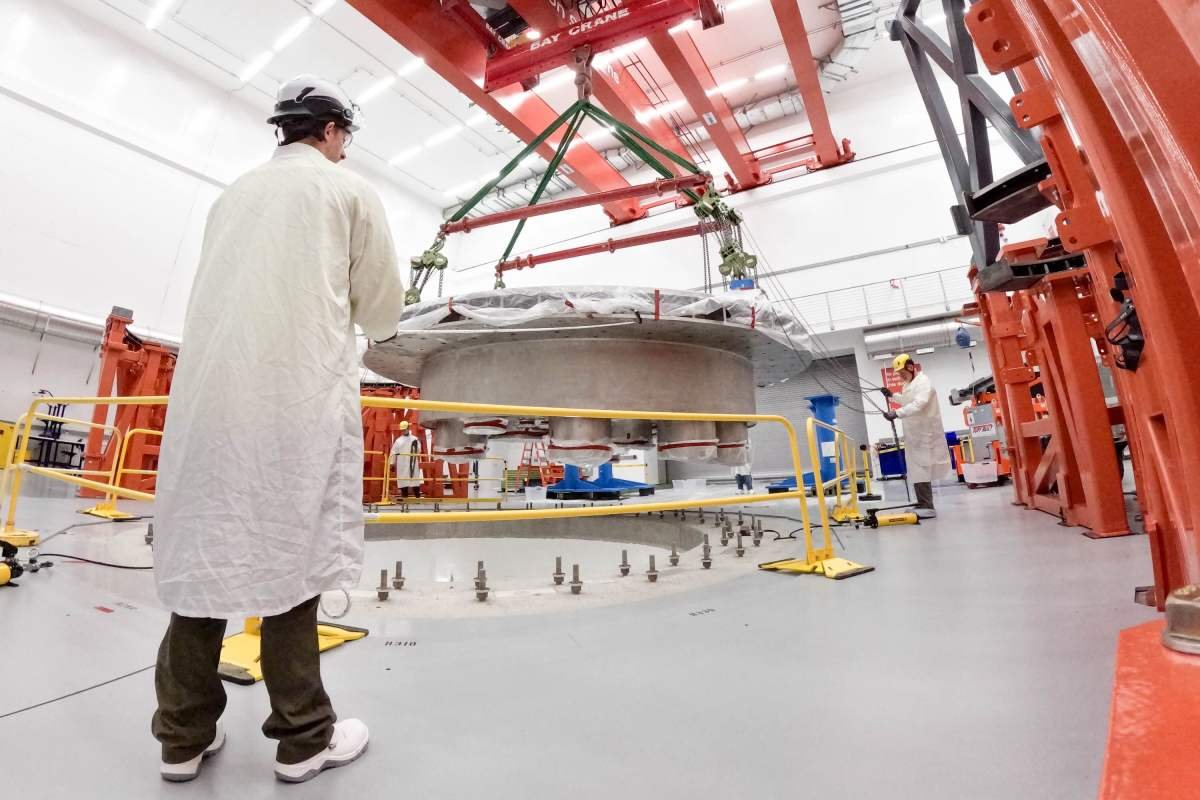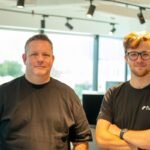Commonwealth Fusion Systems was an important milestone on Tuesday morning with the installation of a key component of his Sparc demonstrator.
The new part is a 24-foot broad, 75 tonnes of stainless steel circle that forms the base of the tokamak, the dough-shaped heart of a merger reactor that CFS hopes will be the first of its kind to generate more power than it consumes. It was called the Kryostat Base, and it was made in Italy and sent halfway around the world to CFS’s terrain in Devens, Massachusetts.
‘This is the first piece of the actual fusion machine,’ Alex Croely, director of Tokamak operations at Cfstold TechCrunch. The work on the site has been underway for more than three years, as the company constructs the buildings and machinery that will support the reactor’s core.
“This is a big issue for us, because it means we move on to a new stage of the project where we do not build an industrial facility – we still do it a bit – but we are also building the real tokamak itself,” he said.
CFS is one of the many new businesses that have emerged over the past few years to pursue fusion power, which promises to deliver gigawatts from pollution -free electricity from a hydrogen fuel derived from seawater. Investors rely on the technology to meet future power needs, which skyrocket as heavy users spread such as electric vehicles and data centers.
The company, which, among other investors, is supported by Bill Gates’ breakthrough energy businesses, is widely regarded as one of the best prospects to prove whether fusion power is commercially feasible. The company announced in December that its first commercial reactor will be located outside Richmond, Virginia.
Sparc is expected to come online in 2027, and if it works as CFS expects, it may be the first tokamak to produce more power than it takes to run. So far, only the National Ignition Facility of the Department of Energy has been able to hit so -called scientific interruption, even in a series of successful experiments, the first of which took place in December 2022.
But the reactor of the NIF differs significantly from CFSs, and uses lasers to put a fuel grain to merger conditions together. CFS’s tokamak uses magnets to herd 100 million degrees C -plasma in a tight donut shape, which limits and compresses until the merger occurs.
Tokamaks use superconducting magnets to generate the powerful magnetic fields needed to coral the plasma. Those magnets should be cooled to -253 degrees C using liquid helium. The Kryostat helps maintain the icy conditions, which act like a thermos by isolating it from ambient temperatures. “The Kryostat Base is basically like the bottom of the Thermos,” Creely said.
Just like someone receiving an Amazon package, CFS had to figure out and inspect the Kryostat Base before installing it. But unlike an e-commerce package that takes a few seconds to open, it took the CFS team a few days to remove the delivery material and another week “just to make sure nothing was damaged in the shipping,” Creely said.
The CFS team then moved the Kryostat Base to the Tokamak Hall, where exactly bolts of the concrete foundation placed from the rust -free steel disk. “Then you forge it,” he said.
Along the Cryostat base, the work continues on the other three most important pieces of the Tokamak, which will be compiled simultaneously in their final configuration, whether at the end of this year or early next year. Thereafter, CFS will ensure that all the pieces work together as planned, a process known as commissioning that lasts months.
“This is the first of the kind,” Creely said. “There is not just like a button and it turns on.”
(Tagstotranslate) Core Melting (T) Fusion Power (T) Breakthrough Energy Ventures (T) Commonwealth Fusion Systems
+++++++++++++++++++
TechNewsUpdates
beewire.org










